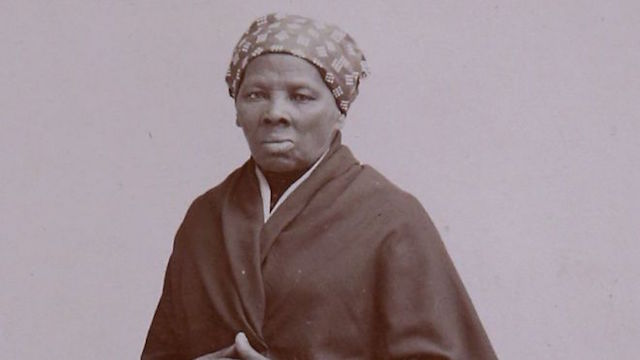It will take 14 years, in 2030 to be exact, to have Harriet Tubman's face on the new $20 bill. But again, we have waited almost 100 years for this moment: seing the first woman on a US banknote since Martha Washington briefly graced the $1 bill in the 1890s, but most importantly the first Black woman, whose efforts, deemed almost beyond the humanly possible, well documented in her lifetime, but like many African-Americans written out of history in the decades after the Civil War, given one of the most prominent honors in the US.
Most importantly, Harriet Tubman, a slave who became a prominent abolitionist, will replace on the front of the bill a former president who owned slaves. Former President Andrew Jackson, a slave owner, will be moved to the back.
It is said that in mid-October 1849, Harriet Tubman, a slave in the state of Maryland, crossed the invisible line that borders the state of Pennsylvania. She
walked 90 miles from Maryland to Philadelphia, through the State of Delaware, guided by a river bank and the North Star. Once in Philadelphia, from a slave object Tubman became a free woman. She later recalled: " When I found I had crossed that line, I looked at my hands to see if I was the same person. There was such a glory over everything; the sun came like gold through the trees, and over the fields, and I felt like I was in Heaven."
She found a job as a maid and saved a few dollars that helped her to save her entire family and a score of other slaves, using the so-called "underground railroad." She later worked for the Union as a cook and a spy during he Civil War, championed the women's rights and lead the struggle against slavery.
When she fled from slavery to freedom, in 1849, Tubman was only 27 years old, a slave among slaves and a fourth child among nine siblings. Her true name was Araminta - or "Minty" - Ross. As a teenager she was hit in the head by an iron weight thrown by an overseer at another slave and was severely injured. She suffered from seizures for the rest of her life, as well as "visions" which she believed were sent from God. When her master died, she feared that she and her brothers would be sold further South.
She convinced her two younger brothers, Benjamin and Henry to flee. She had taken the first name of her mother and the last name of her husband. On the night of the 17th September 17th 1849, they escaped. But, her brothers, fearful of being captured following wanted ads in local papers, gave up and returned to slavery, while Harriet Tubman forged ahead alone towards freedom. John Tubman, Harriet's husband, a free man, stayed behind when Harriet decided to escape.
When the Fugitive Slave Act of 1850 empowered slave owners to recapture slaves who had fled to free states, Tubman, working with other abolitionists, helped to extend the underground railroad to Canada, where people could settle without fear of being captured.
Harriet Tubman worked tirelessly for civil, women, and human rights until her death, helping hundreds of slaves to gain freedom. Towards the end of her life, she lived on a small piece of land in Auburn, New York, allocated to her by the abolitionist Senator William H Seward. In 1869, she had married Nelson Davis, a Civil War veteran, and in 1874 they adopted a baby girl, Gertie. In 1903 she donated part of the land to the Church and in 1908 opened the Harriet Tubman Home for the Aged, a home for the elderly African-Americans. The brain injury she had sustained as a child was worsening with age, and in 1913 Tubman moved into the home, where he died that year, aged 91.
Along with Harriet Tubman Davis, Eleanor Roosevelt, the Rev. Dr. Martin Luther King Jr. and Marian Anderson will be honored and depicted on the back of the new $5 bill.
















